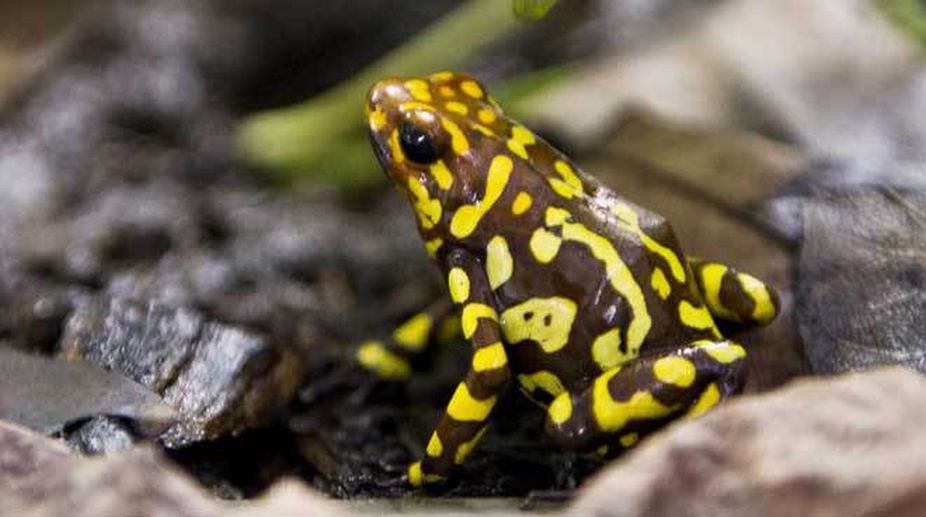Naturalist, broadcaster David Attenborough to get Indira Gandhi Peace Prize for 2019
His name was selected for the prize by an international jury chaired by former president Pranab Mukherjee, the Indira Gandhi Memorial Trust announced on Tuesday.

Representational Image (Photo: Getty Image)
A new frog species, which measures just about two centimetres and was discovered in the Peruvian Andes, has been named after the famous British broadcaster and naturalist Sir David Attenborough.
While there are already a number of species named after including mammals, reptiles, invertebrates and plants, both extinct and extant, not until now has the host of the BBC Natural History's Life series been honoured with an amphibian.
Advertisement
The frog is formally described as Pristimantis attenboroughi, while commonly it is to be referred to as the Attenborough's Rubber Frog.
Advertisement
Scientists from Illinois Wesleyan University and University of Michigan in the US, spent two years surveying montane forests in central Peru, in order to document the local amphibians and reptiles and evaluate their conservation statuses.
Their efforts have been rewarded with several new species of frogs and a new spectacled lizard.
Each of these discoveries, including the Attenborough's Rubber Frog, prove how beneficial it is to take into account both morphological and the genetic data, while looking for species new to science.
The Attenborough's rubber frog is known to inhabit several localities across the Pui Pui Protected Forest, a nature reserve located at elevations between 3,400 and 3,936 metres above sea level in central Peru.
The adult males reach size of 14.6-19.2 millimetres in length, while the females are larger measuring between 19.2 and 23.0 millimetres.
The ground colour ranges from pale to dark grey or reddish brown to brownish olive with dark grey scattered flecks.
Juveniles are paler (yellowish to reddish brown) with contrasting dark brown flecks and distinct stripes.
Due to the amphibian being known from fewer than ten localities, spread across less than 20,000 square metres, the species should be deemed either Vulnerable or Endangered, according to the IUCN Red List Categories and Criteria.
However, researchers suggest that the Attenborough's Rubber frog should be listed as Near Threatened instead, since the Piu Piu forest is formally protected and still largely unknown, so it is likely that there are more additional populations of the new species.
On the other hand, factors such as fungal infections, climate change, pollution and man-made fires continue to be threats for many Andean amphibians even inside protected areas.
"We dedicate this species to Sir David Frederick Attenborough in honour for his educational documentaries on wildlife, especially on amphibians (eg Life in Cold Blood, Fabulous Frogs), and for raising awareness about the importance of wildlife conservation," researchers said.
Among the numerous namesakes of Sir David Attenborough to date, there are a rare genus of beautiful flowering plants, a rare butterfly species, commonly known as the Attenborough's black-eyed satyr, a flightless weevil species, as well as a number of extinct species.
The study was published in the journal ZooKeys.
Advertisement